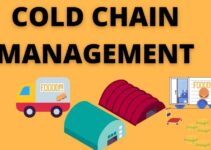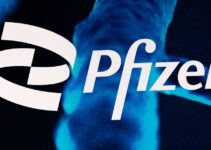The supply chain management process deals with wide areas; procurement and logistics management are its two main elements. Today, we’ll discuss procurement and logistics management; its definition; how it works, various types, the relationship between them, and key differences.
What is Procurement and Logistics Management?
Procurement and logistics management are the two main business operational areas that help companies achieve their goals and objectives. Their functions and operations comprise of finding and sourcing, procuring, storing, and delivering finished products to the end consumers.
However, procurement is the method of purchasing products and services from an external source; logistics management outlines the flow and movement of goods and products from one point to another. The two areas ensure the efficiency of business operations and supply chain activities to amplify the company’s profitability.
Process of P&LM – How it Works
Procurement is the method of purchasing products, goods, and services by negotiating with external suppliers. It comprises various areas of the purchasing process ranging from recognizing needs and requirements to issuing the request proposal.
On the other hand, logistics management is a method of planning, managing, organizing, and controlling the flow and movement of products, services, and materials to satisfy the goals and objectives of the company. It comprises of various things from developing the procurement strategies to managing the inventory.
In short, logistics and procurement are the two main areas of business operations and functions. Collectively, it ensures the availability of necessary goods and services based on the needs and requirements of the company. It would help them to decrease the waste and cost.
Types of P&LM
Some of the main types of procurement and logistics management are as follows;
Direct
Direct procuring is when companies buy materials and supplies directly from suppliers and vendors. The direct procuring process is highly time-sensitive and intensive because of the close relationship between buyers and suppliers.
Indirect
Indirect procuring is when businesses and companies issue the purchasing contract of goods and services indirectly with the assistance of a third party. The indirect procuring process is highly complex because it demands coordination and collaboration among various units of the company.
Parallel
Parallel procuring is when you are considering multiple suppliers for a single contract, it allows buyers to negotiate the best quality and price for customers. The parallel procuring process is difficult to manage because it involves competition among suppliers.
Relationship between P&LM
Let’s discuss the relationship between procurement and LM, some of the key elements are as follows;
Overlapping Areas
When you are analyzing the relationship between procurement and logistics management; then you should comprehend the connecting and linking party at the end of the purchasing process. You should study their role in the procuring process for the company; it allows you to see the overlapping areas.
Practical Connection
The connection and relationship between logistics and procurement is not just a theoretical discussion, rather it is very much practical and has feet on the ground. The procuring party needs the logistical services to complete the process from beginning to end. However, it consists of other tools and equipment to make the process safe and sound.
Inbound Flow
The procuring team develops a strategic plan with suppliers to facilitate the production and manufacturing process. It comprises activities like purchasing raw supplies and materials from external suppliers by making sure to follow steps and activities;
- Resource planning
- Supply sourcing
- Negotiation
- Order Placement
- Inbound transportation
- Storage
- Managing quality assurance
- Coordinating with suppliers
- Scheduling
- Researching new sources
- Making sure continuous supply
Outbound Movement
The focus of the logistical SC process is the flow of finished goods to the end consumers. Customers are the final destination of the marketing channel, and making sure the availability of goods and services plays a key role in the marketing efforts.
Procuring Logistics
Procuring logistics is when the logistical network supports and facilitates the procuring process. The focus of procuring is sourcing materials, raw supplies, and components for the finished goods. However, the procuring team also purchases logistical services like warehousing, transportation, delivery, and return and maintenance.
Differences Between P&LM
Some of the main differences between procurement and logistics management are as follows;
Scope
The logistical process has a much wider and broader scope, and it comprises the movement of products and information in the supply chain network and process. The focus of the procuring process is very small and limited and it focuses on sourcing, finding, and purchasing goods.
Goals and Objectives
The goal of logistical operations is storing and moving products and goods efficiently and effectively. The objective of procuring is to find and source the best quality material at the lowest price.
Phases in SC Processes
Procuring is the initial stage in the supply chain process and it comprises of sourcing and purchasing supplies and materials. Logistics plays a key role from start to finish in the SC process, because it supplies material to the company for production and delivering end products to the customers.
Conclusion: Procurement and Logistics Management
After an in-depth study of procurement and logistics management; we have realized that P&LM plays a key role in supply chain management. If you are learning about the role and relationship between procurement and logistics, then you should keep in mind the abovementioned definition, similarities, and examples.
Ahsan is an accomplished researcher and has a deep insight in worldly life affairs. He goes Live 3 days a week on various social media platforms. Other than research writing, he’s a very interesting person.


